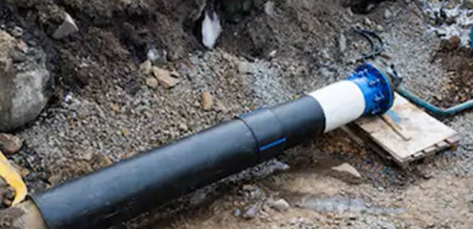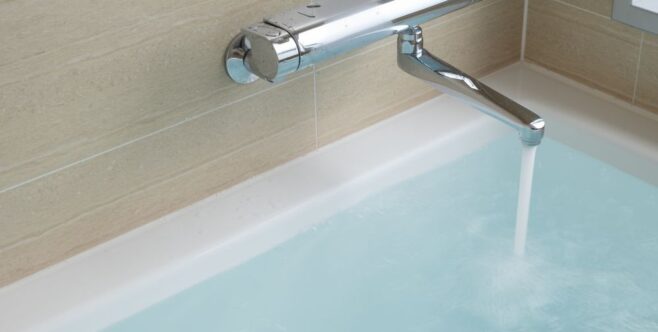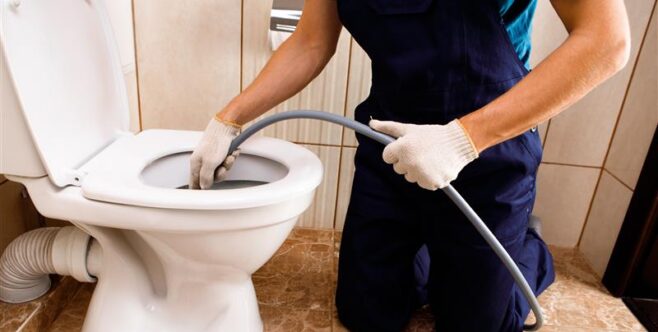How to Choose Between Pipe Relining and Pipe Replacement
If you’ve been dealing with blocked drains, burst pipes, invasive tree roots, or damaged pipework, it might be time to replace your pipes.
In cases like these, you have one major question to consider. Should you choose pipe relining or traditional pipe replacement to install your new plumbing?

There are many factors to consider when it comes to Pipe Relining Vs Pipe Replacement, and the best option for you will depend on your circumstances. In some cases, you will have no option but to go with one process over the other, but in many situations, you get to choose the solution that best works for you.
In this article, our expert Melbourne plumbers will explain the difference between pipe relining and traditional pipe replacement.
If you need assistance with blocked or damaged pipes, we can dispatch a plumber to Vermont, Blackburn, or across Melbourne to assist you! If you need help with blocked drains in Melbourne give us a call.
What Is Pipe Relining?
Pipe relining is the newer and more innovative solution for replacing or repairing blocked and damaged pipes. However, pipe relining technology is not as new as many people think. It has actually been used for a few decades and is a well-established and proven solution!
Also known as Cured-In-Place-Pipe Lining or Trenchless Pipe Replacement, this process requires very little digging. Most of the time, a single access hole is all that’s required to replace entire sections of pipe. This is because pipe relining repairs and replaces your old and damaged piping from the inside.
How Does Pipe Relining Work?
The process of pipe relining works by inserting a new PVC pipe inside your existing pipes. This PVC pipe tube is covered in an epoxy resin and inflated once it enters the damaged pipe. By inflating, the resin sticks to the internal walls of the damaged pipe. Once the resin is cured, you have a brand new surface on the inside of your pipes that is hardened, protective, and fully sealed.
Said simply, pipe relining allows you to insert the new pipe inside the old one rather than digging up the old pipe and manually installing a replacement.
The Pipe Relining Process in 5 Easy Steps
- Your plumber will use CCTV drain cameras to assess the pipes in the sewer line. They will examine the extent of the damage and check for blockages and a build-up of grime.
- To clear any blockages and build-ups, hydro jet cleaning equipment will be used. This high-pressure water jet ensures your pipes are ready for relining!
- A small access hole is created and the new pipe lining is inserted into the existing pipe.
- The plumber then inflates the new lining so it adheres to the walls of your old pipes – creating a pipe within a pipe!
- Once cured, you have brand new pipes that will last for years! Curing will occur naturally in a few hours, but your plumber may use additional techniques to speed up the process.
Is Pipe Relining Just a Temporary Solution?
Some people think that pipe relining must be a Band-Aid solution because it’s much less labour intensive than the alternative. However, this is a misconception. Pipe relining provides you with brand new pipes that will last just as long or even longer than pipes installed using traditional methods! That’s the beauty of pipe and drain relining – it’s the same permanent solution with none of the fuss.
What Is Traditional Pipe Replacement and How Does It Work?
The traditional pipe replacement method is probably more what you would expect (and fear) when you hear pipe replacement. It involves plumbers coming to your property and digging deep trenches that allow them to access, manually remove, and replace broken underground pipes. Any structures that stand in the way of the plumber and the damaged pipes will also have to be removed, including sections of wall and concrete slabs.
This traditional method of pipe replacement is sometimes known as Drain Excavation or the Dig and Replace method. It is far more time consuming and disruptive, but it may be required for more serious jobs.
The 5 Main Steps Involved in Traditional Pipe Replacement
- An assessment is carried out to locate the blockage and or the pipe damage. This may involve CCTV pipe surveillance. The area is also assessed to precisely locate electricity lines and gas lines.
- Once all this information has been established, relevant safety equipment can be installed and the excavation process can begin. This is either completed using excavation machinery or by hand, and it can take a few days depending on the depth of the pipe.
- Once the damaged or blocked sewer pipes are reached, they can be removed and replaced with a brand new pipe that will last for years to come.
- The trench is then refilled, burying the pipe.
- Once the process is complete, you can look into fixing any walls, concrete slabs, or landscaping that had to be disrupted during the removal process.
What Are the Pros and Cons of Pipe Relining?
As you can imagine, pipe relining is usually the go-to method for both homeowners and plumbers. Its advantages include:
- A trenchless process that is less invasive: With pipe relining, you barely have to do any digging (usually one small hole). There are no deep trenches and you don’t have to tear down walls or break through foundations!
- Faster pipe replacement: Sewer relining can usually take place within a day, with most of that time being taken up by the curing process.
- Peace and quiet: A pipe relining job involves minimal disruption. You won’t have to worry about loud noises. This can be a big problem with traditional methods, especially when machinery is used.
- Safety: With pipe relining, your home doesn’t become a major worksite, meaning both your family and the plumbers are much safer throughout the process.
- Long-lasting: Your newly relined pipe can last 50-years or more.
- Great warranties: Did you know that relined pipes are often considered many times stronger than newly replaced ones? For this reason, more generous warranties are often available when you choose pipe relining.
- Usually more affordable: In the majority of cases, pipe relining solutions will be cheaper than traditional pipe replacement.
- Prevent a plumbing emergency: When a plumber unblocks your drains, they may recommend pipe relining. You might not need it urgently, but as a preventative measure, it can save time and money in the future.
While pipe relining is the preferred method, it does have its drawbacks, such as:
- Expensive materials: Pipe relining products can be pricey, and in some rare cases, these materials make relining the more expensive method.
- Operator error: Not every plumber is highly trained in pipe relining, and if the process isn’t completed correctly, your blockage or damage is likely to recur in the future.
- Not all pipework is protected: As you are only relining certain sections of the pipe, other areas will remain more vulnerable to problems like tree root invasion and damage.
- Relining isn’t always an option: While it’s not very common, severe damage to your pipes can mean relining is impossible. This can occur if your pipes are crushed, collapsed, displaced, sagging, holding water, or majorly affected by tree roots.
What Are the Pros and Cons of Traditional Pipe Replacement?
Excavating and replacing your underground pipes is usually a last resort, but this method certainly has its advantages.
The pros of traditional pipe replacement include:
- It works when pipe relining doesn’t: If your pipes can’t be fixed using the modern method, you can always rely on the dig and replace option.
- Simple pipe replacement doesn’t need to be expensive: If you don’t need to dig too deep and the excavation requirements are simple (such as not having to remove walls and foundations), traditional pipe replacement can be affordable. In some cases, it may even end up cheaper than pipe relining!
The drawbacks of traditional pipe replacement include:
- The entire process creates more safety hazards: Excavating pipes can turn your property into a worksite with health and safety hazards for both residents and workers.
- It’s more time consuming: Digging, pipe removal and new installation all take up time. On the other hand, the longest part of pipe relining is often very passive, making it less inconvenient (you’re just waiting a few hours for the pipe to cure).
- It can be noisy, messy, and disruptive: People will be digging up your garden, and potentially sections of your house, and excavation machinery is sometimes involved. All this noise, mess, and disruption is avoidable if pipe relining is available as an alternative.
- A larger team is required: With more plumbers required onsite and more tools used in the process, you can be sure that traditional pipe relining will usually be more expensive.
- There’s more work to do afterwards: Once pipe relining is done, there’s basically nothing left to do. After a traditional pipe replacement, you probably need to fix sections of your garden and landscaping, and in some cases, walls, and concrete slabs/paths will also need to be repaired.
Pipe Relining Vs Pipe Replacement – What Are the Typical Costs?
No matter how you choose to replace your pipes, the process isn’t going to be cheap. Pipe relining and pipe replacement are investments that will last for years to come. Either way, the costs will be cheaper than the damage caused if you ignore the problems in the sewer line.
Overall, pipe relining is usually more cost-effective because there is less to consider. The materials can be a bit expensive, but once you calculate what you need (based on a per metre cost), you basically have your pipe relining costs. Just add any standard plumbing fees and you’re done!
Traditional pipe replacement is generally more expensive because there are more factors to consider. As well as standard plumbing fees and the cost of the new pipe, you could face growing labour expenses depending on a number of factors. This includes how deep you need to dig, what structures you need to remove, how many people are involved, and what extra machinery (if any) is required.
In the best-case scenario, excavation and pipe replacement may end up cheaper, but most of the time, these complicating factors will see you paying a much larger bill.
One thing you can do to lower your costs for either job is to choose pipe relining experts with $0 callout fees. This way, there is no additional cost for coming to your property whether you need a plumber in Reservoir or a plumbing team in Chirnside Park.
How to Decide if Pipe Relining or Replacement Is the Best Option for Your Home
Generally speaking, you should always ask your plumber about pipe relining before pipe replacement. If your plumber thinks pipe relining is impossible because of the nature of a blockage or the extent of the pipe damage, excavation and replacement will then become the best option.
Said simply, you should choose pipe relining in most cases, especially if:
- It will avoid digging up driveways, landscaping, and parts of your building.
- Environmentally friendly methods are important to you.
You should only choose pipe replacement if:
- Your pipes are misaligned, damaged, or blocked in a way that rules out pipe relining
- The pipes are relatively shallow, which may make traditional methods faster, easier, and more cost-effective.
Do you need a team of professional plumbers in Heidelberg or Doncaster, Epping or Clayton? With $0 call-out fees, a wide service area, and expertise in blocked drains and pipe relining services, MCN Plumbing can assist you!

 0420 102 198
0420 102 198


